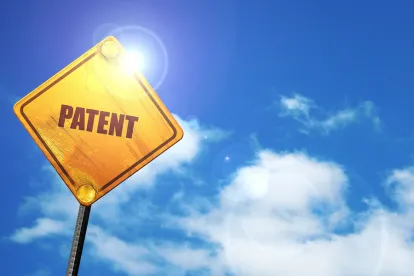For many companies in many industries, patents are an important tool for driving innovation. At the same time, patents limit competition, so that companies must also be wary of their competitors’ patent portfolios. The result is that for many companies it is important to understand whether inventions are entitled to patent protection. The Supreme Court has long held that certain types of discoveries are ineligible for patents: laws of nature, natural phenomena, and abstract ideas. These discoveries are “part of the storehouse of knowledge of all men ... free to all men and reserved exclusively to none.”(1) However, determining the scope of these judicially-created categories has proven difficult, generating substantial conflict amongst litigants. At the urging of aggrieved innovators, Congress has recently taken an interest in patent eligibility, proposing new legislation and holding hearings on the issue. At the same time, the Supreme Court is weighing new petitions for certiorari on issues of patent eligibility. Unfortunately, these divergent legal currents leave innovators caught between the rock of the Supreme Court’s unclear jurisprudence and the hard place of evolving congressional reform.
This legal morass stems in large part from the Supreme Court’s decisions on patent eligibility, particularly a series of opinions issued in the past ten years. In the first case, Bilski v. Kappos, the Court rejected the Federal Circuit’s efforts to develop a potentially clearer alternative to determining patent eligibility than the Supreme Court’s categorical exclusions. (2) In reaffirming the importance of the three categories, however, the Court noted that “applications” of ineligible subject matter may in some cases receive patent protection. In the next three cases, the Court grappled with this meaning of “application.” The Court quickly recognized that “all inventions at some level embody, use, reflect, rest upon, or apply laws of nature, natural phenomena, or abstract ideas.”(3) An invention, therefore, is not ineligible for patent protection simply because it involves some excluded subject matter. The issue is whether an invention involves enough eligible material to warrant patent protection. The Court ultimately developed a two-step framework for determining whether an invention passes this eligibility threshold, most clearly enunciated in Alice Corp. Pty. v. CLS Bank International. (4) The first stage evaluates whether an invention is “directed to” material falling in one of the three ineligible categories. (5) If so, the second stage examines “whether the additional elements [in the patent] transform the nature of the claim into a patent-eligible application.” (6) In particular, the Court noted that an abstract idea could not be rendered patent eligible through the use of “well-understood, routine, conventional activities previously known to the industry.”(7)
The effects of the Supreme Court’s decisions have reverberated through the lower courts. Accused infringers quickly began filing motions to dismiss and motions for summary judgment arguing that patents were invalid because they claimed ineligible subject matter, particularly in cases related to software, internet services, and medical diagnostics and treatment. Because these motions were based on the two-step framework from Alice, they soon became known as “Alice motions.” These motions were largely successful, particularly at the dismissal stage, with some estimates of success rates by patent challengers exceeding 50%. Favorable, early resolution was particularly attractive to accused infringers, sparking an increase in the number of Alice motions filed. At the same time, the U.S. Patent and Trademark Office (USPTO) began reviewing patent applications with increased scrutiny regarding eligibility.
Nevertheless, some companies and commentators decried the impact of Alice, arguing that the decision discouraged innovation in certain fields. Recently, these complaints have gained congressional traction. On May 22, 2019, a bipartisan group of senators and congressmen, including the Chair of the Senate Judiciary Subcommittee on Intellectual Property and the Chairman of the House Judiciary Subcommittee on Intellectual Property and the Courts, proposed amendments to the Patent Act designed to rewrite the law of patent eligibility. Specifically, the proposed revision would eliminate the prohibition on patenting abstract ideas, laws of nature, or natural phenomena and abrogate “all cases establishing or interpreting those exceptions to eligibility.”(8) Instead, patent eligibility would depend on whether a discovery provides “specific and practical utility in any field of technology through human intervention.”(9) Additionally, the proposed legislation would explicitly be “construed in favor of eligibility.”
The Senate Judiciary Subcommittee on Intellectual Property held hearings on June 4, 5, and 11 regarding the draft amendment, receiving testimony from forty-five witnesses whose assessments of the new eligibility standard ranged widely. Some lauded the new law as reestablishing patent protection for important innovations and providing greater legal clarity. For example, Manny Schecter, the Chief Patent Counsel for IBM, asserted that “the current patent eligibility standards do not provide the certainty needed to enable modern business to operate effectively.” Schecter predicted the draft bill would “reduce uncertainty of patent rights, diminish collateral damage to high quality patents, and improve the integrity of the patent system.” Likewise, David Kappos, the former Director of the USPTO, described current patent eligibility jurisprudence as “a mess” and expressed concern that without reform American innovation would fall behind in key areas. Kappos endorsed the new legislation as “an effective, simple, creative solution.” Others who testified were less optimistic about the draft bill. For instance, David W. Jones, the Executive Director of the High Tech Inventors Alliance, stated that the proposed changes “would impede, rather than encourage, innovation.” Jeffrey K. Francer of the Association for Accessible Medicines, a trade association for manufacturers and distributers of generic drugs, stated that the new legislation would lead to higher drug prices. Various law professors testified that expanding patent eligibility could lead to an across-the-board increase in patent litigation.
Presently, the status of congressional efforts to reform the law of patent eligibility is uncertain. The Senate Judiciary Subcommittee on Intellectual Property ended the June hearings by promising to further revise the bill in light of the three days of testimony. The debate may also be impacted by new decisions by the Supreme Court, which is currently considering at least two petitions for certiorari on issues of patent eligibility. Even if the statutory amendment passes, substantial hurdles remain to providing the certainty and clarity in patent eligibility that the supporters of the statutory revision hope to achieve. For example, the meanings of key terms in the proposed legislation, such as “human intervention” and “applied discovery,” are to some extent unclear. In fact, the extent to which Congress can expand patent eligibility is itself undecided. The U.S. Constitution grants Congress the power to enact patent laws that “promote the Progress of … useful Arts” by granting exclusive rights to “Inventors” for their “Discoveries,” and the Supreme Court has not squarely addressed whether this language limits the power of Congress to expand patent eligibility. (10) The result is that litigation regarding issues of patent eligibility is likely to continue, whether under the Supreme Court’s categorical jurisprudence or the new legislative approach. In the meantime, litigants should continue to file and fight Alice motions and to draft their patent applications mindful of the Supreme Court’s three exclusions. Even with the recent flurry of congressional activity, it is certainly too soon to bank on reform dramatically expanding patent eligibility.
1 Funk Brothers Seed Co. v. Kalo Inoculant Co., 333 U.S. 127, 130 (1948).
2 561 U.S. 593, 649 (2010) (rejecting the Federal Circuit’s machine-or-transformation test).
3 Mayo Collaborative Servs. v. Prometheus Labs., Inc., 566 U.S. 66, 71 (2012).
4 573 U.S. 208 (2014).
5 Id. at 217.
6 Id. (international quotation marks omitted).
7 Id. at 225 (internal quotation marks and alternations omitted).
8 Thom Tillis, Sens. Tillis and Coons and Reps. Collins, Johnson, and Stivers Release Draft Bill Text to Reform Section 101 of the Patent Act (2019), https://www.tillis.senate.gov/2019/5/sens-tillis-and-coons-and-repscollins-johnson-and-stivers-release-draft-bill-text-to-reform-section-101-of-the-patent-act.
9 Id.
10 Cf. Bilski, 561 U.S. at 632 (Stevens, J., concurring) (arguing that business methods are ineligible for patent protection because they are not part of the “useful Arts).





 />i
/>i

